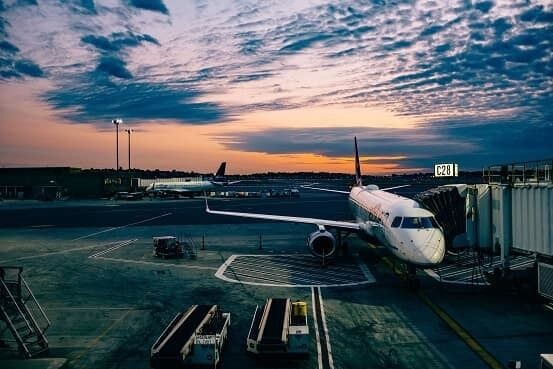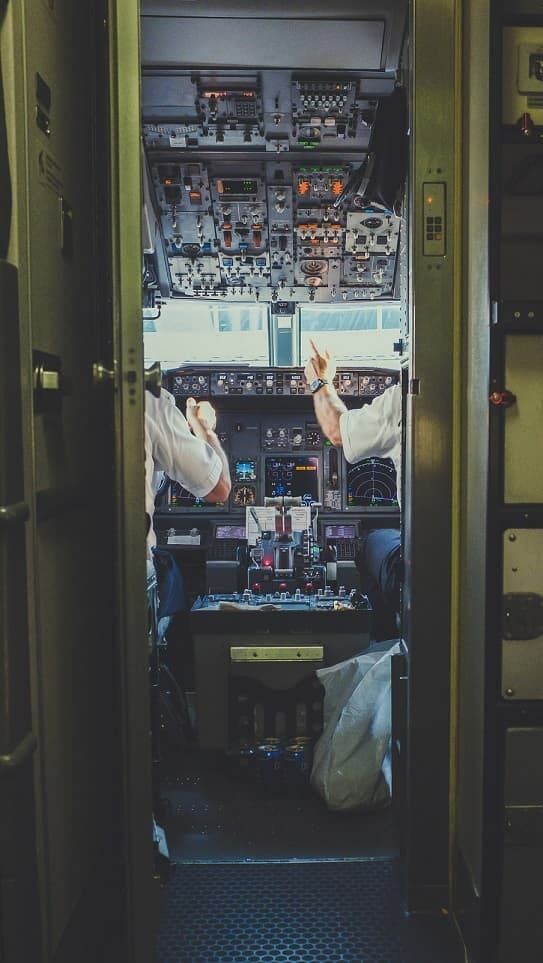Dreaming of soaring through the skies as an airline pilot? Many aspiring aviators are eager to know: just How Long Does An Airline Career Pilot Program take? This comprehensive guide will break down the timeline, step-by-step, to becoming a commercial airline pilot in 2024, ensuring you understand the journey and can plan your flight path accordingly.
Your Flight Plan: Steps to Becoming an Airline Pilot
The journey to becoming an airline pilot is structured and progressive. Here’s a detailed breakdown of each essential step in your pilot career program.
Step 1 – Embark on Your Journey with a Private Pilot Certificate (PPC)
The first crucial step in any airline career pilot program is achieving your Private Pilot Certificate (PPC). This initial certification is your license to learn, allowing you to fly solo and carry passengers, albeit not for compensation. Choosing the right flight school is paramount; consider both Part 61 and Part 141 flight schools to find the best fit for your learning style and schedule.
Before you even take to the skies, preparation is key. You’ll need to conquer the FAA written exam. Enrolling in a dedicated private pilot ground school, either in-person or online, can significantly boost your preparedness and understanding of aviation principles.
Your flight training begins in a single-engine aircraft, where you’ll master the fundamentals of flight under the guidance of a Certified Flight Instructor (CFI). This phase involves a blend of ground school and practical flight hours.
Time Investment: Earning your Private Pilot Certificate typically takes 2-3 months of intensive training. While the FAA mandates a minimum of 40 flight hours, most students require closer to 50-60 hours to become proficient and ready for the practical exam with an FAA examiner.
Step 2 – Mastering Instrument Flying with an Instrument Rating (IR)
The next phase of your airline career pilot program is obtaining your Instrument Rating (IR). This rating is essential for professional pilots as it qualifies you to fly in various weather conditions and under Instrument Flight Rules (IFR), crucial for airline operations.
Similar to the PPC, preparation for the IR written exam often involves instrument pilot ground school. This focused training will equip you with the knowledge necessary for instrument flying.
Expect to log an additional 40 hours of flight time dedicated to instrument training, building upon your private pilot hours. This phase emphasizes precision flying and reliance on aircraft instruments rather than visual references.
Time Investment: Achieving your Instrument Rating generally takes 1-2 months of dedicated training, depending on your learning pace and the intensity of your program.
Step 3 – Becoming a Commercial Pilot with a Commercial Pilot Certificate (CPC)
Earning your Commercial Pilot Certificate (CPC) marks a significant milestone in your airline career pilot program. This certificate demonstrates advanced piloting skills and a deeper understanding of aircraft operations and flight procedures. Crucially, it allows you to be paid for flying.
While the CPC opens doors to earning income as a pilot, it’s important to understand that it’s not a direct ticket to airline employment. Airlines have more stringent experience requirements that you’ll need to meet in subsequent steps.
Time Investment: Obtaining your Commercial Pilot Certificate typically takes 1-2 months of focused training. This stage builds on your previous skills, demanding a higher level of precision and professionalism in your flying.
Step 4 – Building Flight Hours as a Certified Flight Instructor (CFI)
Many aspiring airline pilots choose to become Certified Flight Instructors (CFI) as a strategic step in their career pilot program. The CFI certificate allows you to train new pilots, providing a valuable way to accumulate flight hours while earning an income.
CFI academies offer specialized training to equip you with the teaching skills necessary to instruct effectively. This phase not only builds your flight time but also enhances your understanding of aviation principles through teaching.
While not strictly mandatory for all airline pilot pathways, becoming a CFI is a popular and efficient route for many to gain the required flight hours for airline employment.
Time Investment: Earning your CFI certificate involves attending a CFI academy, which typically takes 1-2 months. The time spent as a CFI varies greatly, as it depends on how quickly you want to build flight hours. Most pilots spend 12-18 months instructing to reach the necessary flight time for airlines.
Step 5 – Expanding Your Capabilities with a Multi-Engine Rating (ME)
A Multi-Engine Rating (ME) is a mandatory requirement for aspiring airline pilots. Commercial airlines operate multi-engine aircraft, so this rating is essential for flying larger, more complex airplanes.
This rating signifies your ability to safely operate aircraft with more than one engine, a core competency for airline pilots.
Time Investment: Adding a Multi-Engine Rating is a shorter phase, usually taking around 1 month of dedicated training.
Step 6 – Accumulating Flight Time Experience: The 1,500-Hour Milestone
In the United States, the golden number for airline pilot qualification is 1,500 hours of flight time. After completing the previous steps, you’ll likely have between 160-250 hours. The critical task now is to bridge the gap to 1,500 hours.
Working as a flight instructor is the most common path for building these crucial hours, allowing you to get paid while gaining invaluable experience. Other entry-level pilot positions can also contribute to your flight time accumulation.
Time Investment: The time required to gain 1,500 hours depends on your chosen path and dedication. As a flight instructor, it generally takes 12-18 months to build the remaining flight hours needed for airline applications.
Step 7 – The Pinnacle: Airline Transport Pilot Certificate (ATP)
The Airline Transport Pilot (ATP) certificate is the highest level of pilot certification and a mandatory requirement to fly for commercial airlines under Part 121 and certain Part 135 operations. It signifies an advanced level of pilot skill and knowledge, essential for the responsibilities of an airline pilot.
The ATP certification is highly regarded and is becoming the industry benchmark for professional flight operations, even beyond airline flying.
Time Investment: Earning your ATP certificate is often the final step before applying to airlines and typically takes 1-2 weeks of ground school and checkride preparation after reaching the 1,500-hour mark.
Decoding the Timeline: How Long is an Airline Career Pilot Program?
So, let’s consolidate the timeline to answer the key question: how long does an airline career pilot program take in total?
From zero experience to airline pilot qualification, you’re looking at approximately 2 to 2.5 years. This timeframe encompasses all the necessary training, certifications, and crucial flight hour accumulation.
Here’s a summary breakdown of the estimated duration for each stage:
| Training Stage | Estimated Duration |
|---|---|
| Private Pilot Training | 2-3 Months |
| Instrument Rating | 1-2 Months |
| Commercial Certificate | 1-2 Months |
| Certified Flight Instructor (CFI) | 1-2 Months |
| CFI Instrument (Optional) | 1 Month |
| Multi-Engine Rating | 1 Month |
| Time Build to 1,500 Hours | 12-18 Months |
| Total Estimated Time | 2 – 2.5 Years |


This timeline assumes a dedicated, full-time training approach. Part-time training will naturally extend the duration of your airline career pilot program.
Medical Fitness: A Prerequisite for Your Pilot Career Program
Before embarking on your flight training, ensure you meet the medical requirements. The FAA issues three classes of medical certificates, with the first-class medical certificate being mandatory for airline pilots.
First-Class FAA Medical Certificate Requirements:
- Hearing: Pass a voice test, hearing average conversation from 6 feet.
- Vision: 20/20 vision, corrected or uncorrected. Not colorblind.
- General Health: Meet standards for cardiovascular and neurological health.
Disqualifying Medical Conditions:
Certain medical conditions can disqualify you from obtaining a medical certificate. These include a history of heart attack, significant heart issues, drug abuse, or multiple DUIs.
It’s advisable to consult with an Aviation Medical Examiner (AME) early in your planning process to address any medical concerns.
Financial Investment: Cost of an Airline Career Pilot Program
Becoming an airline pilot is a significant financial investment. The majority of expenses occur during training and certification, before you become a CFI and start earning.
While studies previously suggested 8-10 years to recoup training costs, rapidly rising pilot salaries may shorten this to 4 years or less.
Flight school costs can range from $90,000 to $110,000 for programs that take you through the initial certifications and provide around 250 hours of flight time.
However, remember that after obtaining your CFI, you can earn income as a flight instructor, offsetting further training costs and building hours simultaneously.
The Pilot Shortage: Accelerating Your Airline Career Path
Now is an opportune time to pursue an airline career pilot program. A significant pilot shortage is driving high demand for qualified pilots globally. Airlines are actively recruiting and offering attractive packages to attract talent.
Boeing projects a need for over 804,000 new pilots by 2037, and Airbus estimates over 450,000 by 2035. This demand, coupled with retirements and industry growth, creates substantial career opportunities for aspiring pilots.
This favorable job market can potentially accelerate your career progression as airlines are eager to hire qualified individuals.
Is a College Degree Essential for an Airline Career Pilot Program?
While a college degree is not strictly required to become a commercial airline pilot, it is increasingly viewed favorably by airlines. In competitive hiring situations, a degree can be an advantage.
Relevant degrees for pilots include:
- Airport Management
- Aviation Management
- Aeronautical Engineering
- Aeronautical Science
Consider joining organizations like the Air Line Pilots Association International (ALPA) ACE club during college to network and gain industry insights.
Fast Track to the Flight Deck: Zero Time to Airline Programs
For those seeking the quickest route, “Zero Time to Airline” programs offer an accelerated pathway to an airline career. These intensive programs can take you from no experience to airline-ready in as little as 2 years.
These programs consolidate training and often have partnerships with regional airlines, providing a more direct route to employment after graduation.
In Conclusion: Your Timeline to the Skies
Understanding “how long does an airline career pilot program” take is crucial for planning your journey to the flight deck. While the typical timeframe is 2-2.5 years, this can vary based on individual progress, training intensity, and program structure.
The steps are clear, the demand is high, and the rewards of an airline pilot career are substantial. If you’re passionate about aviation and ready to commit to focused training, your journey to becoming a commercial airline pilot can take off sooner than you might think.
Embark on your airline career pilot program today and take the first step towards your dream job in the sky!
Get Started with a Zero Time to Airline Program